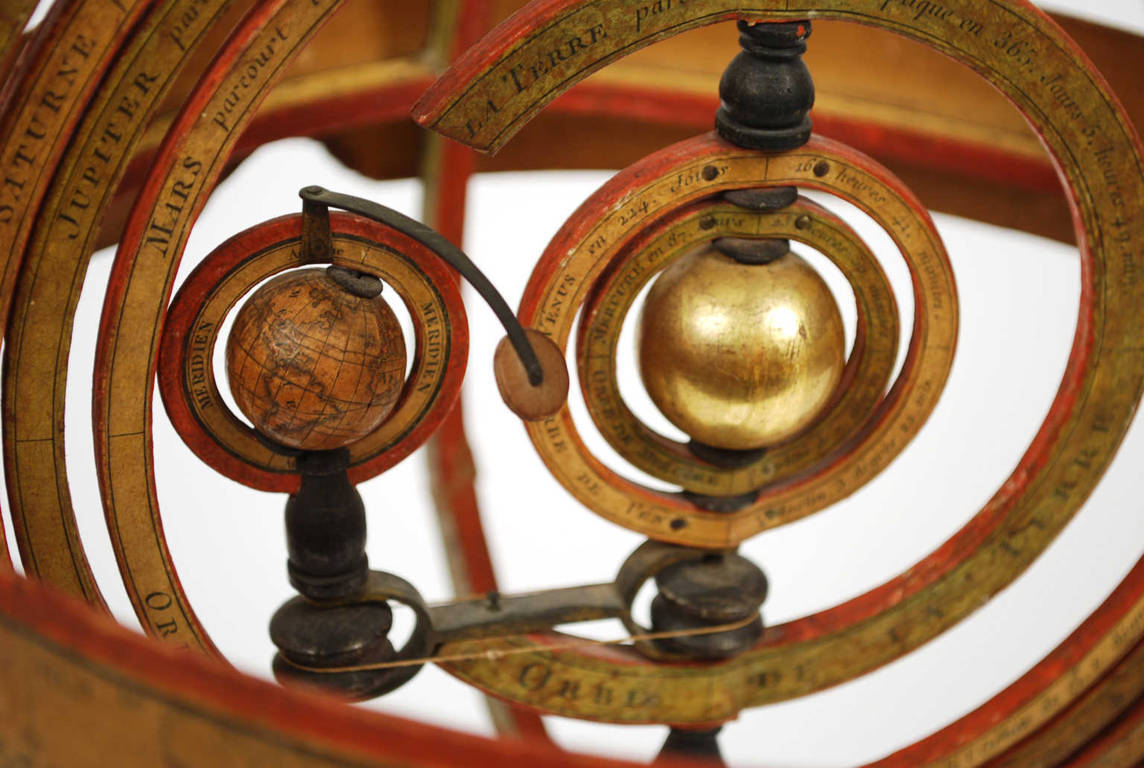1722615984Code 7869 Antique SextantBrass sextant signed H. Hughes & Son Ltd n. 32890 from the 1930s; instrument complete with optics and housed in its original mahogany wood box with locking hooks and brass handle, complete with lock and key. Brass frame with engraved silver protractor scale embedded in the arch, with scale from 0 to + 130°, vernier with micrometric screw adjustment with built-in lighting and reading vernier, ebonite handle containing the batteries for night lighting. Four colored glasses for the fixed mirror and three for the mobile one, index and horizon mirror, three telescopes, one of which is long, adjustment key and a filter. Box measures 26x27.3x14.5 cm – 10.2x10.8x5.8 inches.
Conservation status: good, fully functional and complete with custom-made support base made of wood and brass.
The firm founded by Henry Hughes in the 1830s became H. Hughes & Son in 1875, and H. Hughes & Son Ltd in 1903. After a merger in 1947 with Kelvin, Bottomley & Baird Ltd, the firm became Kelvin & Hughes Ltd.
Place the instrument in a vertical plane and, looking through the aiming device, sight the horizon line visible through the non-silvered half of the fixed mirror. By moving the alidade, with which the mirror is integral, the light rays coming from the celestial body and subsequently reflected by the mobile mirror and by the silver half of the fixed mirror are sent back by the latter in the direction of observation: if if you look through the aiming device you see the image of the star, obtained by double reflection, coinciding with the horizon line. The height of the star is expressed by the angle whose value is read on the graduated scale. The filter is used when the star to be targeted is the Sun. The sextant is an optical instrument used in astronomical navigation to measure the height of the stars above the horizon, in order to obtain the geographical coordinates relating to the ship's point. It has the shape of a circular sector of 60°, i.e. one-sixth of the circumference, hence the name, at the vertex of which is pivoted a mobile alidade on which a mirror is fixed which rotates with it. On the back of the mirror there is a support with a telescope oriented towards a second mirror, silvered only for one half, which allows you to simultaneously observe the sea horizon, in alignment, and the pointed star, whose image is reflected by the fixed mirror to the alidade and then to the silver part of the mirror. By adjusting the position of the alidade index it is possible to make the image of the horizon collimate with that of the celestial body and obtain the angle between the horizon and the celestial body on the graduated scale of the 60° sector. To measure the height of a star (for example the Sun) with a sextant, place the instrument in a vertical plane and, looking through the sighting device, sight the horizon line visible through the non-silvered half of the fixed mirror. By moving the alidade, with which the mirror is integral, it is ensured that the light rays coming from the celestial body and subsequently reflected by the mobile mirror and by the silver half of the fixed mirror are sent back by the latter in the direction of observation: if you look through the aiming device, you see the image of the star, obtained by double reflection, coinciding with the horizon line. The height of the star is expressed by the angle whose value is read on the graduated scale. The filter is used when the star to be targeted is the Sun.
It was Sir Isaac Newton who invented the principle of double reflection in navigational instruments, but this research was never published. Subsequently, two men, independently of each other, discovered the sextant around 1730: John Hadley (1682-1744), English mathematician, and Thomas Godfrey, (1704-1749), American inventor. But it was not until 1758 that Admiral John Campbell carried out a series of sea trials to test a new method that relied on lunar distance as a means of calculating longitude. This is how the sextant was developed. Initially made of brass, they had scales divided with great precision by mathematicians who built scientific instruments.





























